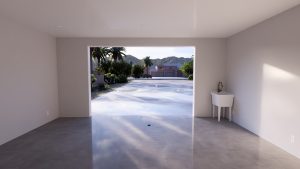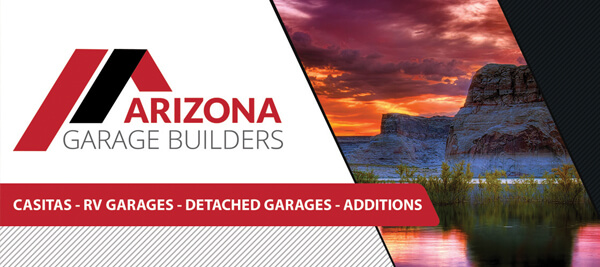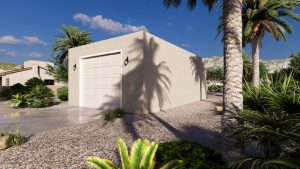
Building a garage in a desert climate, like that of Arizona, presents unique challenges and opportunities. The intense sun, high temperatures, low humidity, and occasional monsoon rains require thoughtful planning and careful material selection to ensure that your garage stands the test of time. As Arizona Garage Builders, we know how to construct garages that are not only durable but also optimized for the harsh desert environment.
Here’s a guide to the best practices for building garages in desert climates to ensure long-term durability, energy efficiency, and comfort.
1. Choose Heat-Resistant Materials
In desert climates, garages are exposed to extreme heat for much of the year. Choosing the right materials that can withstand high temperatures is crucial for the longevity of your garage.
• Roofing Materials: Opt for materials like metal roofing, which reflects sunlight and helps keep the garage cooler. Metal roofing is also durable and requires minimal maintenance.
• Insulated Wall Systems: Proper insulation is key to keeping your garage temperature regulated. Consider materials like insulated concrete forms (ICF) or spray foam insulation to minimize heat transfer.
• Stucco Finishes: Stucco is a popular choice for the exterior of garages in the desert because of its durability and its ability to handle heat without warping or cracking.
By choosing heat-resistant materials, you protect your investment and ensure your garage remains functional even during the hottest months of the year.
2. Incorporate Proper Ventilation
Good ventilation is essential for desert garages, especially if you plan on using the space for more than just parking your car. Poorly ventilated garages can become ovens during the summer, making them uncomfortable and damaging to the items stored inside.
• Passive Ventilation: Install vents along the roofline and walls to allow hot air to escape naturally.
• Exhaust Fans: If your garage will be used as a workspace or living area, consider adding exhaust fans to improve air circulation.
• Windows: Energy-efficient windows that can be opened allow for natural ventilation, especially during cooler evenings. Make sure they are tinted or treated to block UV rays.
Proper ventilation keeps your garage cool and prevents moisture buildup during the rare but intense monsoon rains that desert climates experience.
3. Use Light-Colored, Reflective Materials
In desert climates, the sun is relentless. Dark colors absorb heat, which can make your garage unbearably hot. Instead, opt for light-colored, reflective materials that help to reduce heat absorption.
• Roofing: Choose light-colored roofing materials, such as white or light gray metal panels, to reflect sunlight and keep your garage cooler.
• Exterior Paint: Use light-colored or reflective paint for the exterior of your garage. This will not only improve energy efficiency but also help maintain a comfortable temperature inside.
Light-colored materials and finishes can make a huge difference in reducing the heat load on your garage.
4. Prioritize Insulation
While insulation is often associated with cold climates, it’s equally important in the desert. Insulating your garage helps maintain a stable internal temperature and prevents the hot desert air from seeping in.
• Roof Insulation: Insulate the roof to prevent the searing desert sun from heating up the interior space. Spray foam insulation is a great option for garage ceilings.
• Wall Insulation: Adding insulation to the walls will reduce heat transfer, making the garage more comfortable and energy-efficient.
• Garage Doors: Choose insulated garage doors that help block heat from entering and keep the cool air inside. Insulated doors are especially beneficial for garages that double as workspaces or living areas.
5. Install Energy-Efficient Windows and Doors
Energy-efficient windows and doors play a significant role in managing the interior climate of your garage. In the desert, windows and doors are major points of heat gain, so it’s essential to invest in high-quality, energy-efficient options.
• Low-E Windows: Low-emissivity (Low-E) glass can significantly reduce heat transfer, keeping your garage cooler during hot days.
• Sealed and Insulated Doors: Make sure your garage doors are well-sealed and insulated to prevent air leaks and heat transfer.
These energy-efficient features not only improve comfort but also reduce cooling costs in the long run.
6. Rainwater Drainage and Flood Protection
Though deserts are typically dry, when it rains, it pours. Monsoon season in Arizona can bring flash floods that overwhelm poorly planned garages. Proper drainage and flood protection are critical to keeping your garage dry and secure.
• Slope the Foundation: Ensure that the foundation of your garage is properly sloped away from the building to prevent water from pooling.
• Install Gutters: While gutters aren’t always necessary in desert climates, they can be helpful during monsoon season. Use gutters to direct rainwater away from the garage foundation.
• Flood Barriers: Consider installing flood barriers or berms around the perimeter of your garage to protect against flash floods, especially if your property is in a flood-prone area.
These measures will help prevent water damage and protect your garage from unexpected monsoon storms.
7. Opt for Durable Flooring
The right flooring is critical for maintaining a garage that stands up to the desert climate. In Arizona, you’ll need flooring that is durable, easy to clean, and able to handle temperature fluctuations.
• Epoxy Flooring: Epoxy is a popular choice for desert garages due to its durability and resistance to heat, chemicals, and stains.
• Sealed Concrete: A well-sealed concrete floor can also handle the heat and is less prone to cracking in extreme temperatures.
Durable flooring ensures that your garage will remain functional and attractive for years to come.
8. Consider Solar Power
Desert climates, especially in Arizona, are ideal for incorporating solar energy into your garage design. Solar panels can help power your garage and reduce your energy costs significantly.
• Roof-Mounted Solar Panels: Use your garage’s roof space to install solar panels, which can generate electricity to power the garage and even your home.
• Solar-Powered Ventilation: Solar-powered fans or exhaust systems can help keep your garage cool without relying on traditional electricity.
Integrating solar energy is not only environmentally friendly but also a smart investment in regions with abundant sunlight.
Final Thoughts
Building a garage in a desert climate requires a specialized approach to ensure that your structure can withstand extreme heat and occasional storms while remaining energy-efficient and comfortable. From choosing the right materials to ensuring proper insulation and ventilation, every aspect of the build should be tailored to the unique demands of the desert environment.
At Arizona Garage Builders, we have extensive experience building custom garages designed to handle the Arizona heat. Whether you’re constructing a two-car garage, an RV garage, or a detached garage with living space, our team is here to guide you through every step of the process, ensuring that your garage is durable, functional, and perfectly suited to the desert climate. Reach out to us today to discuss your project!


Get A Quote For Your New Garage
We prepare your estimate for your new construction project with absolutely no obligation or cost. We prepare all of the calculations and 3d renderings for your project so you know what Arizona Garage Builders can do for you. We will prepare your proposal online so you can see it from any device..



